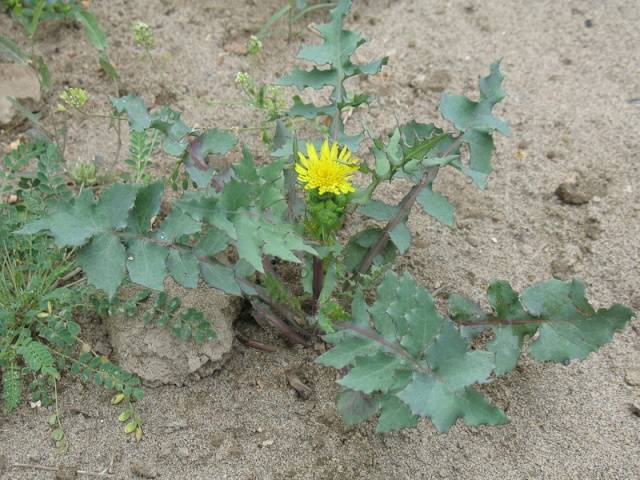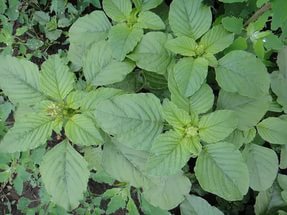Content
Plants that accompany agricultural crops, but are not cultivated by humans, are called weeds or weeds. Many of them are carried by birds and animals or end up in the soil along with seed.
Weeds negatively affect the quality and quantity of the crop. Weeds are divided into annual, biennial and perennial. They are also monocots or dicots, which is determined by the structure of the seed. Perennial dicotyledonous weeds have a more stable root system and, accordingly, receive more nutrients. It is very difficult to fight such weeds.
In order to timely carry out all agrotechnical measures aimed at combating weeds, we suggest that you consider a list of dicotyledonous weeds with photos and names, to which a brief description will be attached.
Annual and biennial weeds
In the fight against annual weeds, it is important to prevent their reproduction through seeds. But to avoid this, it is important to know how and when weeds develop.Below we will look at the most common types of dicotyledonous annual and biennial weeds.
Cornflower blue
A weed with a stem of medium height - up to 90 cm. It sprouts in May, and the flowering period occurs in June - September. Blooms in blue, blue and purple. One cornflower flower usually produces up to 1.5 thousand seeds.
Seeds can remain dormant in the ground for ten years and germinate under favorable conditions. Cereal crops are especially affected by cornflowers. Belongs to class grass weeds.
Highlander
This is a super productive weed. One flower produces about 3,000 seeds with high viability - up to 10 years. The growth of an adult weed is 1 m. It usually accompanies the planting of legumes, oilseeds and vegetable plants.
Spurge
This weed is also called sungazer. The plant reaches a height of 0.5 m. The root system is well developed. Euphorbia leaves are elongated. It blooms throughout the summer, with the first shoots appearing in May. As a result, over such a long period, many seeds are formed, and even with low germination of the weed, with inaction on the part of the gardener, his property will very quickly be overgrown with milkweed.
Euphorbia typically grows among legumes, grains, and forage crops.
Sow thistle
There are 2 types sow thistle – field and garden. It is the second type of weed that is included in the list of gardeners’ worries. The growth of this weed is 30–100 cm. The leaves are pointed, jagged, long, rich green. The stem is hollow. The flower baskets of thistle reach a diameter of 3.5 cm. Reproduction of thistle occurs through the formation of root suckers.
Quinoa and pigweed
These weeds love loose, fertile soil rich in nitrogen, with a slightly acidic or neutral reaction.Potato fields are the best place for their growth. The height of the bush can be up to 1.5 m. The appearance of these two types of weeds is an excellent indicator of soil fertility.
Nightshade
The best conditions for the growth of this dicotyledonous weed are in row crops, vineyards and orchards. At the same time, nightshade does not take root in cereal crops, provided that the field has a normal density of cultivated plants.
If there is insufficient care for cultivated plants and plantings, the soil will be contaminated with nightshade seeds.
Perennial dicotyledonous weeds
Perennial weeds cause even more damage to crops than annual and biennial weeds. Cultivated plants become more vulnerable to diseases and insect attacks. The most popular perennial dicotyledonous weeds are dandelion and wormwood.
Dandelions
This weed can be seen on almost every lawn. Elongated dandelion leaves radiate from the rosette. A distinctive feature of the plant is its bright yellow flowers, which are very attractive to bees. The seeds are quickly spread by the wind. Dandelions grow in lawns, forage and garden crops.
Sagebrush
This is a tall plant that looks more like a shrub. The first shoots appear in mid-spring. The flowering period occurs in July – August. Even being under a layer of soil equal to 10 cm, seeds can germinate. During the flowering period, tens of thousands of seeds are formed from one bush. These cereal and dicotyledonous weeds infest not only grain crops, but also vegetable and legume crops.
How to deal with dicotyledonous weeds
There are two methods of controlling annual and perennial dicotyledonous weeds: mechanical and chemical.
Mechanical method
The bottom line is to remove weeds from both the underground and above-ground parts. In small areas this can be done manually or using a root remover, hoe or flat cutter.
The fight against dicotyledonous weeds in large fields is usually carried out with walk-behind tractors. If you cover the row spaces with a special material that does not allow light to pass through, you can easily reduce the number of weeds in the beds.
Chemical method
Chemicals called herbicides can be used to remove perennial and annual dicotyledonous weeds. Such preparations can be used before sowing crops or before emergence. But to achieve better results, it is better to treat the soil with herbicides after harvesting. These products penetrate the soil, thereby destroying monocotyledonous and dicotyledonous weeds, since their roots die.
To destroy dicotyledonous plants, drugs such as Command and Pioneer are used. There are two types of post-emergence herbicides: selective and continuous.
In a number of continuous action herbicides:
- Sniper.
- Roundup.
- Hurricane.
Selective herbicides that kill dicotyledonous weeds include:
- Lapis lazuli SP.
- Lontrel 300.
Conclusion
The manufacturer indicates all recommendations for the use of the above drugs to control weeds on the packaging. If you follow these recommendations exactly, the products will not harm your health.Of course, the least dangerous method is the mechanical method of clearing weeds from the garden and lawn. However, this method is not always effective. In some cases, it is better to timely treat the land with herbicides, especially considering that the seeds of some weeds can remain in the ground for at least 10 years and sprout after this time.



















